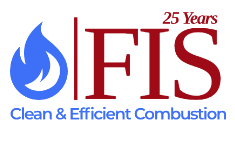NOx Reduction
Pollutant-emission laws governing combustion equipment are increasing every year. One of the environmental regulations now affecting the Chemical Process Industries (CPI) are the laws covering Nitrogen Oxides (NOx) emissions. FIS has been helping users and owners by providing design and engineering services to reduce their NOx emissions, improve the efficiency and capacity of their fired heaters, boilers, and waste heat recovery units. Finding the means for limiting NOx from fired heaters has become a major thrust of many sectors in the CPI.
FIS have completed over 300 engineering studies and projects. We currently have a team of 45 skilled engineers on board with offices in Sugar Land, TX and in New Delhi, India. We have experience in design and revamp all types of refinery fired heaters.
NOx Emissions
Pollutant-emission laws governing combustion equipment are increasing every year. One of the environmental regulations now affecting the Chemical Process Industries (CPI) are the laws covering Nitrogen Oxides (NOx) emissions.
Finding the means for limiting NOx from fired heaters has become a major thrust of many sectors in the CPI.
Reducing NOx Emissions in Fired Heaters
The following options are used in the Chemical and Petrochemical companies to reduce NOx emissions. Flue gas recirculation (FGR) extracts a portion of the flue gas from the stack and returns it to the furnace along with combustion air. This lowers the peak flame temperature, and cuts thermal-NOx formation. The addition of flue gas also reduces the Oxygen available to react with the Nitrogen.
Selective Catalytic Reduction (SCR) involves injecting ammonia into the flue gas upstream of a catalyst bed. The chemical reaction involved is:
O2 + 4NO + 4NH3 = 4N2 + 6H2O
NOx and NH3 combine on the catalyst’s surface, forming an ammonium salt intermediate that subsequently decomposes to produce elemental Nitrogen and Water. The catalyst lowers the activation energy of the NOx decomposition reaction, thereby enabling use of this technology at lower flue gas temperatures. The optimum temp. range for SCR is 600° to 700°F.
Ultra Low NOx Burners, Several designs are available today that combine two NOx reduction steps into one burner without any external equipment. These burners typically incorporate staged air with internal FGR or staged fuel with internal FGR.
Choosing the Best Option for You
FIS has executed several projects regarding low NOx emission. We have the experience and the knowledge to customize the best option for you.
Case Study




